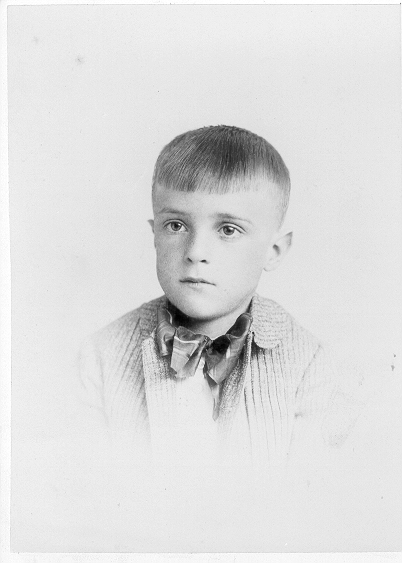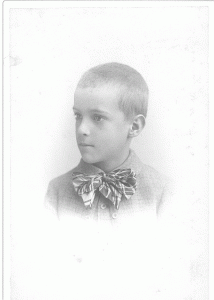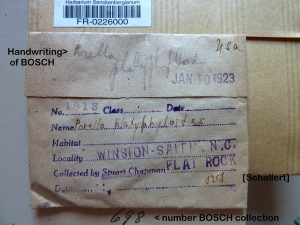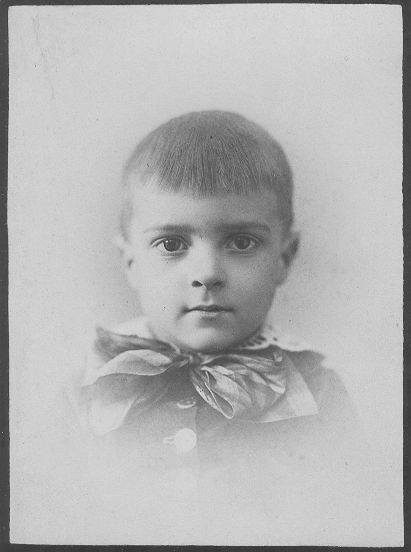(4 June 1883 – 24 December 1956)
The University of North Carolina Chapel Hill Herbarium (NCU) has cataloged 30 bryophytes and 6 lichens collected by Francis Stuart Chapman, who usually used “Stuart Chapman” or “F. S. Chapman” on herbarium labels.
Many specimens collected by Chapman can be found on bryophyteportal.org and lichenportal.org . Duke University Herbarum (DUKE) curates about 260 specimens collected by Chapman. Other herbaria which curate his bryological specimens include: Florida Museum of Natural History (FLAS), University of British Columbia (UBC), Missouri Botanical Garden (MO), Academy of Natural Sciences at Drexel University (PH), Botanical Research Institute of Texas (BRIT), Butler University (BUT), California Academy of Sciences (CAS), Field Museum (F), Farlow Herbarium at Harvard University (FH), New York Botanical Garden (NY), Southern Illinois University (SIU), Acadia University (ACAD), University of Washington (WTU), University of Wisconsin (WIS), University of Wyoming (RM), Universite de Montreal (MT), Yale University (YPM:YU), University of Colorado (COLO), University of Michigan (MICH), University of Tennessee (TENN), University of Vermont (VT), and the Senckenberg Forschungsinstitut und Naturmuseum (FR). Herbaria that hold Chapman’s lichens include Arizona State University (ASU), Harvard University (HUH), New York Botanical Garden (NY) and University of Kansas (KANU).
It is not known how Stuart Chapman came to be interested in botany. Over the course of his life he worked as a purveyor of newspapers & magazines, a cotton weaver in textile mills, and a gardener. Despite the fact that his specimens are cited in many papers and are found in many herbaria, no articles authored by him have been found nor was he associated with an academic institution. He was a member of the Sullivant Moss Society for at least one year (1924) and submitted specimens to that organization’s herbarium.(1) Most of Stuart Chapman’s specimens found their way to herbaria via his collecting companion, Dr. Paul Otto Schallert.
In 2018 NCU received several hundred bryophyte specimens as a gift from the University of North Carolina at Greensboro. This gift, which is still being accessioned, already yielded several specimens collected by Francis Stuart Chapman.
#####
Francis Stuart Chapman, called “Stuart” by the family, was born on 4 June 1883 in Oneonta, Otsego County, New York to Edwin Pier Chapman and Harriet Stuart Robinson. Stuart had a younger brother, William D. Chapman. When Stuart was 14 years old and William 8 years old, their mother died. The following year Edwin, an optician, and William moved to Philmont, NY, but Stuart remained in Oneonta to complete high school. Stuart rejoined the family in Philmont and, according to the 1905 New York census, worked as a newspaper carrier. (2, 3)

Edwin re-married, and according to family lore, Stuart did not get along with his step-mother and her two daughters so left home at age 16. According to Jean Stuart Chapman Snow, William’s daughter, “Stuart wanted Dad to come with him, but Dad was too young.” (4)

By 1910 Stuart, in his mid-twenties, had moved to Leaksville, Rockingham County, North Carolina, and was employed as a weaver in a cotton mill.(5) The area around Leaksville, including the villages of Spray and Draper, was rich in textile mills. Draper-American Mills, Wearwell Sheeting Mill, Spray Woolen Mills, Rhode Island Mill, Lily Mill, Nantucket Mill, Spray Bleachery, American Warehouse, Athena Mills, and Wearwell Bedspread Mills all were found in the area.(6) In 1924 the Tri-City Hospital, funded in part by a $7,500.00 gift from Marshall Field & Company, was founded by Dr. H. Carlyle Dixon, Dr. C. V. Tyner, and Dr. Kenan Casteen. In 1968, the villages of Leaksville, Spray and Draper merged to form Eden, North Carolina.(7)
Jean Snow writes, “In 1914 Dad’s [William D. Chapman] and Stuart’s Great-Aunt Emily Stuart died, [and] Stuart was one of her legatees, along with William D. Chapman. Dad’s reply (1915?) to a query on Stuart’s whereabouts says “The last seen of him was about two years ago. Since then nothing has been heard from him. Perhaps if you try Spray, North Carolina you might get in touch with him. He made his home there about three years ago and possibly may be there now…”(4, 11)
By 1920 Stuart Chapman had changed his job and residence: he was working as a landscape gardener and living as a boarder with Solomon Pardue, a laborer in a furniture factory, Solomon’s wife and six children, in Winston-Salem, Forsyth County, North Carolina.(8) It is about this time – 1919 – that the first herbarium specimens collected by Stuart Chapman appear. He collected Hypnum imponens from Laurel Branch in Alleghany County, North Carolina on 5 December 1919 and Bazzania trilobata from that same location on 1 April 1920. It is not known what sparked Chapman’s interest in botany or inspired him to focus on bryophytes, though the fact that he’d gotten a job as a gardener certainly shows an interest in plants.
Stuart Chapman collected many bryophytes in North Carolina in the 1920’s. Wadesboro, Anson County was a frequent collecting locality in 1921 (DUKE: 17 specimens; NY: 1 specimen; NCU: 2 specimens). He collected two specimens in Walnut Cove, Clay County in 1922 (DUKE). By far Chapman’s most frequent collecting area during the decade was Forsyth County: NCU, MO, NY and DUKE hold more than 100 bryophytes collected near Winston-Salem. Several note specific collecting locations such as “south of cotton mill” and “Hanestown,” reflecting the importance of textiles to the local economy, and Stuart’s familiarity with mill life.
Many specimens collected by Stuart Chapman were handled in some way – packaged by, or determined by – Paul Otto Schallert, M.D. (1879-1970). How and when Chapman and Schallert met is not known. They both lived in Winston-Salem: Schallert 1910-1943; Chapman ca. 1920-1930. Schallert was a physician who practiced out of his house on South Main Street, though he probably had privileges in area hospitals – perhaps including Tri-City Hospital in the milltowns of Leaksville-Spray-Draper, so maybe he encountered Chapman as a patient. Schallert was interested in all aspects of natural history and collected fungi, bryophytes, lichens, and vascular plants, so he was most likely Chapman’s avenue to depositing specimens in herbaria. They certainly collected bryophytes together: on 1 August 1920 they were both at Flat Rock, Forsyth County, NC — Chapman collected Porella platyphylloidea (Schwein.) Lindb. (DUKE 74190) and Schallert collected Calypogeia trichomanis Spreng. ex Mitt. (DUKE 66592). Schallert and Chapman also collected in Glade Valley, Alleghany County, NC together in November 1920. Schallert and Chapman are listed as co-collectors on a specimen of Frullania squarrosa (Reinw. et Al) Dum. from Wadesboro, Anson County, NC in 1921.
Chapman spent one day, 6 April, 1923 collecting bryophytes at Mission Mountain in Albemarle County, Virginia (DUKE, NY). Between 1922 and 1932 Chapman made about two dozen collections around Stroudsburg, Monroe County, Pennsylvania (DUKE, MO).
The 1930 US census has Stuart Chapman still living in Winston-Salem, but now his occupation is listed as “Proprietor, News Dealer; Industry: Newspaper Stand.” (9)
Chapman collected only sporadically in the early 1930’s, but then his botanical activity rebounded in 1936 when he began collecting in the area around Milford, Pike County, Pennsylvania. A social security application dated July, 1941 reveals that Chapman lived at the corner of 7th Street and High Street in Milford, though he had probably lived in the area for several years prior to that, perhaps as early as 1932 judging from specimen collection locations and dates.2 Chapman found work as a gardener for Charles F. Haubert in Newfoundland, Wayne County, Pennsylvania about 27 miles west of Milford.2 Dr. Paul Schallert and Stuart Chapman re-united to botanize in Pike County, Pennsylvania on 25 August 1935, 25 September 1936, 1 October 1936, and 1 October 1937.
No specimens collected by Stuart Chapman dated later than 1937 have yet been found.
At some point Stuart Chapman returned to Winston-Salem, lived at 1114 Butler Street and worked as a magazine salesman. He contracted pneumonia and died in the City Hospital on 24 December 1956.(2)
Jean Stuart Chapman Snow says of her uncle, “Our Chapman line is related to Johnny Appleseed (John Chapman), so I’ve wondered if Stuart ended up with some of Appleseed’s wandering genes.” (10) Just as John Chapman’s botanical legacy was apple orchards (and hard cider!) across America’s frontier, Stuart Chapman’s botanical legacy is herbarium specimens used by scientists around the globe to document biodiversity. Or, as Shanna Oberreiter, Loans Manager of NCU observed, “Stuart Chapman was a wandering, rolling stone who did gather moss.”
#####
Stuart Chapman specimens in the Herbarium Senckenbergianum (FR)
by Dr. Gerhard Winter
The specimens of Stuart Chapman came to our herbarium in 1950 as part of the collection of Carl Bosch (1874-1940) which we received as a bequest by his heirs. Carl Bosch was a German chemist and engineer and Nobel laureate in Chemistry (1931). He was a pioneer in the field of high-pressure industrial chemistry and founder of IG Farben, at one point the world’s largest chemical companies.
Carl Bosch also collected many natural objects, mostly bryophytes and beetles. His collection of palaearctic beetles includes about 100,000 specimens and his bryophyte collection is roughly 30,000 specimens. He personally collected only few bryophytes around his home in Heidelberg; most of the specimens were bought from other collectors. Unfortunately we do not have any documentation from him, when and from whom he bought the bryophtyes. I suspect that Bosch bought the bryophyte specimens of Chapman together with those of Paul O. Schallert, maybe directly from Schallert, but I do not know how Schallert and Bosch came into contact. Colleagues at the Carl Bosch museum in Heidelberg checked the archives but did not find any documents relevant to this topic.
With only about 10% of the Bosch bryophyte collection at FR catalogued to date [2014], I have found 88 specimens collected by Stuart Chapman, and 392 specimens collected by Paul Schallert. I am sure that many more will be found as I continue my research on the Bosch bryological collection. (12)

#####
For more information about the life of Carl Bosch, read The Alchemy of Air: A Jewish Genius, a Doomed Tycoon, and the Scientific Discovery that Fed the World but Fueled the Rise of Hitler by Thomas Hager.
#####
SERENDIPITY AND MY UNCLE STUART
by Jean Stuart Chapman Snow
The word serendipity comes from an ancient Persian tale, The Three Princes of Serendip. “The princes (wrote Horace Walpole in 1754) were always making discoveries by accident and sagacity of things they were not in quest of.”
Serendipity led to my recent discoveries about my uncle, Francis Stuart Chapman (called Stuart by family). I never met him, but perhaps because my middle name is Stuart (a family name), I’ve always wanted to know more about him. Many, many years ago I’d asked Dad about Stuart. “He went south,” said Dad.
Dad was seven, Stuart nine, when their mother died. Three years later Grandpa Chapman moved across the Hudson River to Philmont, New York, where he met and married a widow with two daughters. The family tale says Stuart, at sixteen, ran away from home, wanting to take nine-year-old Dad with him.
In my article about finding heirs, In Praise of Probate (Summer 2005 issue of The Searcher) I’d mentioned Uncle Stuart. My genealogy work had proved that family tale a bit wrong. The truth was that their mother had died three years earlier, Grandpa had moved from Oneonta to Philmont across the Hudson River, and had re-married.
Where the family tale was wrong was in saying that Stuart, unhappy with his newly acquired family, went “South,” to North Carolina or Georgia, and married a Southerner. Need I say genealogists learn to take family tales with a grain of salt?
The truth was that Stuart remained in Oneonta for a year to graduate from high school there, not in Philmont. And Stuart had not run away at sixteen. The New York 1905 “Tweeny” census shows him, age 21, in Philmont where his father, his new stepmother, and Dad now lived. Stuart did board elsewhere, however, his occupation given as a magazine salesman.
Stuart was missing from the 1910 census in Philmont.. But there was an unmarried Stuart F. Chapman, boarding in Leaksville, North Carolina. Leaksville had become the name of three towns which joined: Leaksville, Spray and Draper. This Stuart was about the right age, born in New York, parents born in New York It had to be my uncle, but I had no proof.
The 1920 census appeared with a Frank S. Chapman, about the right age, in Winston-Salem, North Carolina, boarding with a family. No wife. My uncle?
At last the 1930 census appeared with an still unmarried Francis S. Chapman, age still a bit off, still in Winston-Salem. I posted a query on a RootsWeb North Carolina county message board. A kind woman replied that she’d found a Francis S. Chapman in a CD of deaths for that county, who had died December 24,1956. I sent for the death certificate and still can’t believe that it cost only 50¢!
This was my Uncle Stuart: correct birth date, never married, Social Security #19-12-3990. His application is unavailable online, perhaps because being unmarried, he had nobody to report his death. Would snailmail and a check work?. Is it because my middle name is Stuart that I’m so anxious to find as much as I can about him? Yet even though that 1910 Stuart F. in Leaksville, North Carolina was a likely candidate, I couldn’t be sure.
Several years later, researching my Stuart family line in upstate New York, I found a1915 probate for Dad’s and Stuart’s unmarried great-aunt, Emily Stuart. She’d left each of them a bit of money. Stuart must be located.
My first thrill was finding Dad’s familiar handwriting in this fat probate. The second thrill was reading what Dad had written to the lawyers searching for Stuart: that the family had last seen him about two years earlier, but hadn’t heard from him since.
“Perhaps,” Dad’s letter continued, “if you try Spray, N.C, (BINGO!) you might get in touch with him – he made his home there about three years ago.” My online searches had found that in1968 the former towns of Leaksville, Spray, and Draper were consolidated as Eden, N.C. Huzzah! Three cheers for wills and probates!
Now serendipity happens again, making discoveries of what I was not looking for.. At one period, on his way south, Stuart applied of a Social Security card. It says: Stuart Chapman, present home Corner 7 & High St. Milford PA. He was 58 at his last birthday, June 4 1883, born in Oneonta, NY. His present employer: Charles F. Haubert in Newfoundland, PA.. Date last full time job ended: July 12, 1941, Occupation: Gardner, Private Home, paid Daily Wages.
Occupation given as a gardener! And after I was sure I’d found everything possible about Uncle Stuart serendipity drops the next bit of delight in my lap — well, actually in my e-mail.
In January 2014 I received an e-mail from Carol Ann McCormick of the University of North Carolina Herbarium – a museum collection of botanical specimens in Chapel Hill, N.C. The subject? “F. Stuart Chapman // millworker & botanist.” She wrote:
“I am the Asst. Curator of the University of North Carolina Herbarium (a museum collection of botanical specimens) in Chapel Hill. We are members of several consortia of herbaria that are cataloging our collections of lichens (lichenportal.org) and mosses (bryophyteportal.org). .
The University of North Carolina Herbarium has several dozen specimens — both lichens and mosses — collected by F. Stuart Chapman. Moreover, other herbaria — Duke University, Senchenberg Research Institute (Frankfurt am Main, Germany), Missouri Botanical Garden, New York Botanical Garden, University of British Columbia (Canada), and the University of Florida — have moss and lichen specimens collected by F. Stuart Chapman.
I mentioned my interest in F. Stuart Chapman to my colleague, Shanna Oberreiter, this morning, and she ferreted out your posts about your uncle on ancestry.com and your article, “In praise of probate,” that mentions him.
I am convinced that this is your relative, as the collecting localities match the times when he lived in Winston-Salem. We also have specimens that he collected in Wadesboro, Anson County (NC) and Milford, Pike County (PA). I had already hypothesized that he was a mill worker, as each of these towns has a textile mill, and your posts on various genealogical sites say that he was a weaver in cotton mills.
In your research on Stuart, was there any indication of his interest in botany?
Serendipity? Oh, you genius!! And one more, one final goosebump. I wrote my Manhattan daughter:
“Didn’t you take me years ago to some herbarium or garden something? Maybe we even walked past something Uncle Stuart sent there and didn’t even notice! As I remember it was in the Bronx, wasn’t it?
Abigail replied: “Yes, it was the NY Botanical Garden in the Bronx. I went (from the link in the article you sent) to their site and was able to search by collector and he is listed with one specimen. Of course, I would have no idea where it is or how to access it! But maybe we did walk by it, because that is where we went.”
If I believed in reincarnation, I might wonder if my Uncle Stuart was the reincarnation of Johnny Appleseed (John Chapman), the famous wanderer who planted apple seeds through Ohio, Pennsylvania, and Michigan. We are (distantly) related to Johnny Appleseed.
But I’ll be satisfied with serendipity. The three Princes of Serendip could not have been more thrilled with their discoveries than I am with mine.
#####
SOURCES:
- Williams, R. S., Edward B. Chamberlain, C. M. Roberts, George B. Kaiser, Geo. H. Conklin and Charles C. Plitt. 1925. Annual Reports, Sullivant Moss Society, 1924. The Bryologist 28(1): 9-15.
- Pers. comm. Jean Stuart Chapman Snow to Carol Ann McCormick; email of 3 January 2014, 6:03pm.
- 1905 New York Census, Claverack, Philmont, p. 439, ED 4.
- Pers. comm. Jean Stuart Chapman Snow to Carol Ann McCormick; email of 3 January 2014, 9:09pm.
- 1910 United States Census, 2 May 1910, ED 0155, Sheet 23-A, Line 31 (Soundex T-1271, Roll 26; Census Film M-1548, Roll 22.
- www.leaksville.com/MillNews.htm accessed on 8 January 2014.
- http://www.leaksville.com/ accessed on 8 January 2014.
- 1920 United States Census, Winston-Salem, Forsyth County, NC, Vol. 23, ED 101, Sheet 11B, line 87. (Soundex M-15979, Roll 24; Census Film T-625, Roll 1298)
- 1930 United States Census, 10 April, Winston-Salem City, Forsyth County, NC. RollT626-1690, Sheet 11A, printed page 205.
- Pers. Comm. Jean Stuart Chapman Snow to Carol Ann McCormick; email of 7 January, 2014, 3:25pm.
- https://www.scgsgenealogy.com/research/rsch-Probate.htm accessed on 13 January 2014.
- Pers. Comm. Gerhard Winter to Carol Ann McCormick; email of 14 January 2014, 6:23am.
